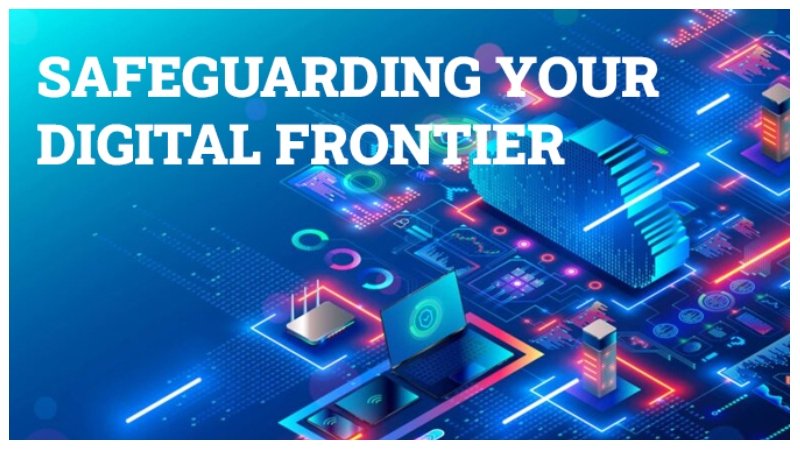In today’s digital age, cyber threats have become an ever-present concern, touching every aspect of our online existence. Fast-paced technological advancements bring comfort and open various avenues for cyber predators. As our reliance on technology intensifies, protecting our digital assets, like sensitive financial records and personal memories stored online, becomes critically important. Among these threats are Trojan viruses, notorious for sneaking into personal and enterprise systems and causing damage ranging from mere inconvenience to devastating breaches.
Just as the ancient tale of the Trojan horse suggests, these malicious agents enter our systems under the guise of trustworthy programs. They exploit human psychology, taking advantage of our tendency to trust familiar or seemingly benign entities. When a Trojan infiltrates a system, it acts stealthily, making detection and removal complex and urgent. Security experts constantly warn us that vigilance and knowledge are our best defenses.
What is a Trojan Horse?
The term “Trojan horse” is derived from Greek mythology, in which crafty fighters entered the city of Troy by hiding inside a giant wooden horse that was given as a present. This story’s sneaky, deceptive nature mirrors the approach taken by Trojan horse malware, which masquerades as legitimate software to trick users into allowing malicious code to run on their systems. Unlike traditional viruses, which replicate once inside, Trojans require users to execute them, often by presenting themselves within seemingly helpful applications or enticing download links.
Unsuspecting victims commonly acquire Trojan horses while browsing unverified websites, interacting with email attachments from dubious senders, or via misleading social media links. These threats exploit both software vulnerabilities and the user’s lack of awareness. Hackers often craft Trojans indistinguishable from genuine services or products, leading users to make unwitting decisions compromising their security. Therefore, being aware of these common tactics and exercising caution while browsing and interacting online is crucial to preventing Trojan attacks.
How Trojan Horses Work
Upon execution, a Trojan horse embeds itself seamlessly into the host system. It may install backdoors for other malware to enter, harvest sensitive data like login credentials, or even hold systems for ransom. Trojan viruses vary widely: some focus on espionage, silently capturing screenshots or keystrokes, while others are designed to turn off security measures, open ports, or exfiltrate data systematically over time.
This adaptability is what makes Trojans particularly dangerous. They can perform multiple functions, each designed to evade detection. Sophisticated Trojans may also disguise their network activity to mimic regular traffic, hiding their nefarious deeds from users and security professionals.
Prevalence and Detection of Trojan Horses
Recent data underscores the widespread nature of Trojan attacks, which comprise a significant proportion of global malware incidents. Due to their stealthy nature, Trojans fly under the radar until too late, making them particularly insidious. Detection of Trojan horses is complex, as they often mutate or use encryption to hide their activity from antivirus programs.
Users and organizations are not defenseless against these threats. They employ automated and manual detection techniques to counter them. These include using robust, updated antivirus software that regularly scans and monitors systems for suspicious activities. It also educates individuals on recognizing potential signs of Trojan infiltration, such as unexpected system behavior or unauthorized data transmissions.
Protecting Yourself and Your Organization
Prevention is not just a strategy; it’s a mindset in the fight against Trojan-induced calamities. Personal and enterprise security measures are vital, encompassing a range of actions from simple to sophisticated—regular updates to software patches close off vulnerabilities that Trojans might exploit. Employing strong, unique passwords helps secure entry points into sensitive systems.
A comprehensive cybersecurity policy is essential for businesses. Such policies should include regular employee training sessions emphasizing the importance of cybersecurity practices and awareness. Additionally, maintaining frequent backups of crucial data reduces the possibility of interruptions and losses by guaranteeing that activities can continue even during an attack.
Response and Recovery from an Attack
Should a Trojan successfully breach your defenses, swift response actions can mitigate damage. Immediate steps include disconnecting the affected device from any network to prevent further spread or communication with external servers. A complete system scan should be performed immediately, using up-to-date antivirus tools to identify and eliminate the threat.
Recovery also involves restoring affected systems using backup data and assessing the scale of the breach. Employing cyber forensics can reveal weaknesses exploited by the Trojan, guiding improvements in defenses. Valuable tools and resources for recovery can provide invaluable support, offering services that help cleanse systems and enhance cybersecurity measures to prevent future incidents.
The Future of Cybersecurity Against Trojans
With the speed at which technology develops, our defenses against Trojan horses and other cyber threats must also stay up. Emerging technologies like machine learning and artificial intelligence provide potential new ways to detect and stop these cunning invaders before they can do severe damage.
The future of cybersecurity hinges on proactive strategies that anticipate and adapt to evolving threats. By investing in modern technologies and continuously educating ourselves about potential weaknesses, we can build robust defenses and ensure that our digital landscapes remain secure. This ongoing battle demands attention and effort today to safeguard against tomorrow’s challenges. For more insights, guides, and updates, visit Disquantified.com, your trusted partner.

